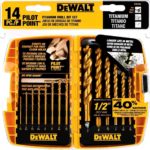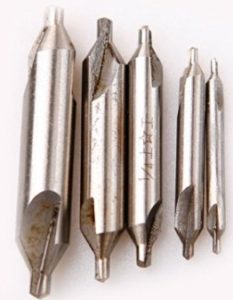Drill Bits for Metal – Twist and Center Bits
|
|
Drill Bits General Characteristics
The twist drills are the mainly used type. It comprises a cutting point at the tip of a cylindrical shaft with helical flutes. Diameter varies from 0.002 to 3.5 in. Small ones are cheap to replace, for larger bits, special grinding tools are available. Even for industrial users, most holes are drilled with standard high-speed steel bits.
The most common twist drill bit for metal has a point angle of 118 degrees, also acceptable for use in plastic, wood and most other materials. A more aggressive angle (such as 90 degrees), is suited for very soft plastics and other materials; such a bit is generally self-starting and can cut very quickly. A shallower angle (twist drill bits for hardened steel) is suited for drilling tougher materials and requires a starter hole.
Drill Bits for Metal Construction
The main components of twist drills are shorn, body and drill point.
- Width of Land
- Rake or Helix Angle
- Width of land
- Body Clearance
- Flutes
- Land
- Leading Edge of the Land
- Heel
- Back Taper
Chart of Shapes Specification
| Helix Angle | High-hardness material Small Rake angle, Large Soft material (Aluminium, etc.) |
| Flute Length | It is determined by the depth of the hole, bush length, etc. |
| Point Angle | A standard point angle is 118° and be changed to suit different applications. Soft material – Small Point angle. Large – for harder material. |
| Diameter Back Taper | To reduce friction with the inside of the drilled hole, the portion of the flute from the tip to the shank is tapered slightly. It is set at a larger value for high-efficiency drills and the work material that allows drilled holes to be closed. |



